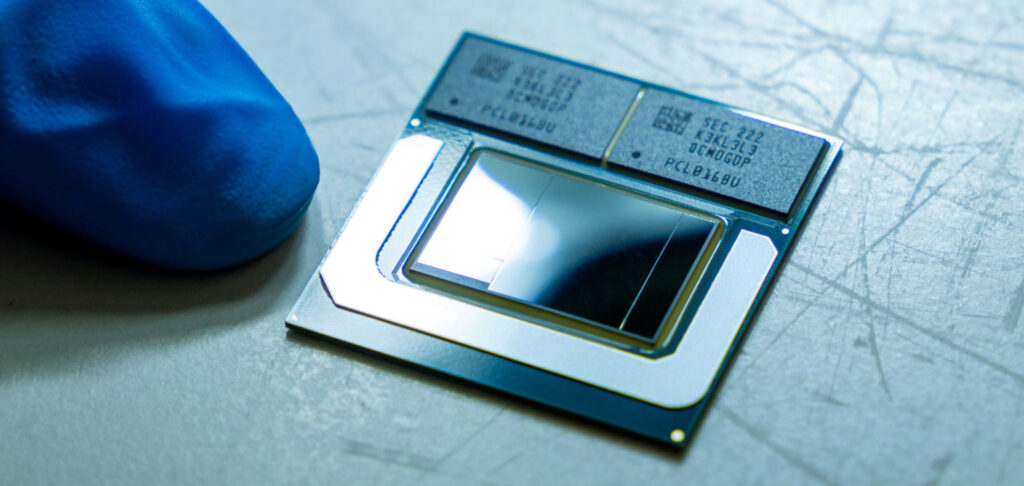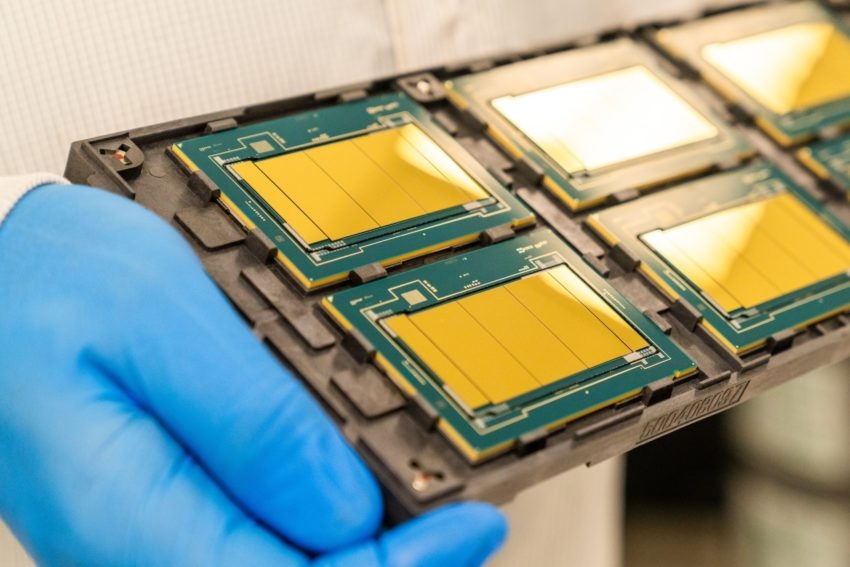
Intel has recently provided insights into its innovations in chip manufacturing, shedding light on its forthcoming 14th-Gen Meteor Lake CPUs. In particular, Intel showcased a chip architecture featuring on-die RAM. In this discussion, we will delve into the significance of this development, its parallels with Apple’s chip manufacturing methodology, and the implications for the upcoming Intel Meteor Lake processors.
Intel Reveals Meteor Lake CPU Featuring On-Die LPDDR5X Memory
Intel’s strides in developing Meteor Lake are poised to set these new CPUs apart from their predecessors, particularly if they adopt this novel CPU architecture design. While Intel showcased the chip design in a demo, they didn’t specify whether it pertained to an entry-level i3 or a flagship i9 processor. Nonetheless, the architectural shift featured in this Meteor Lake CPU has a profound impact on how a computer’s RAM functions.
The Meteor Lake CPU design displayed by Intel incorporates on-die memory. In today’s laptops, RAM is typically either soldered onto the motherboard or upgradeable via additional RAM sticks. However, CPUs with on-die memory eliminate the possibility of RAM upgrades. The demonstrated RAM is Samsung’s 16GB LPDDR5X memory, boasting an impressive 7500MHz speed. Notably, such high RAM speeds have not been commonly paired with laptop CPUs. Even the i9-13980HX laptop, which we reviewed, featured RAM speeds of only 4800MHz.
This implementation of on-die memory appears to enable much higher RAM speeds. The LPDDR5X RAM showcased by Intel offers a peak bandwidth of up to 120 GB/s. Now, let’s delve into why Intel has chosen to adopt a chip design similar to Apple’s.

Why Intel and Apple Opted to Place RAM Next to the Processor
The advantages of on-die memory become evident when the CPU needs to access system memory. The key to this efficiency lies in the proximity of RAM to the CPU, enabling much faster communication between the two components. Consequently, on-die RAM offers the processor significantly faster access to memory.
Intel’s potential Meteor Lake chip design bears resemblance to Apple’s approach in designing its ARM-based M2 and M1 chips for the Mac lineup. The adoption of on-die RAM could indeed become an industry standard in the future. Apple has already embraced this design philosophy by incorporating unified memory. Intel appears to be following suit, aligning with the trend. You can observe Apple’s design for the M1 Ultra chip below.

Similar to Intel’s design for the Meteor Lake CPU mentioned earlier, Apple’s chip also incorporates unified memory. In the case of Apple, they have integrated the system’s RAM directly onto the same die as the M1 Max CPU. To illustrate, the four black squares below represent the 64GB of unified memory integrated into the Apple M1 Max chip.

On-die memory marks a significant advancement, leading to a considerable reduction in communication latency between the processor and onboard system memory. While this presents advantages, it may entail sacrificing upgradability for the sake of superior RAM implementation. If this trend becomes the norm, upgrading laptop RAM in the future could become increasingly challenging.
For a comprehensive overview of what we currently know about Intel’s 14th Gen desktop and laptop CPUs, delve into our detailed guide, which covers release dates, specifications, and benchmarks for Intel’s upcoming processor lineup. What are your thoughts on Intel’s latest demonstration of the Meteor Lake CPU architecture? Feel free to express your opinions in the comments area down below.

0 Comments